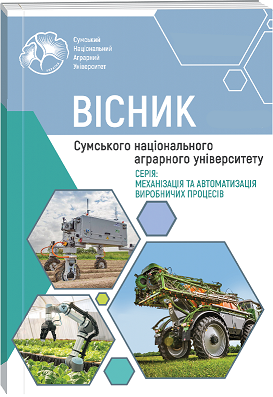APPLICATION OF QUINOA FLOUR IN WHEAT BREAD TECHNOLOGY
Abstract
The article considers the perspective of using high-protein plant additives in the bakery industry using the example of kino flour. The analysis of the study of this issue allows us to state that kino is an extremely promising high-protein additive, however, the percentage of its application and the technology of preparation before application should be selected, which will allow to preserve the biological value and ensure optimal organoleptic properties of the finished product. The method of research is the substantiation of the recipe of wheat bread with the addition of regional kino of the Quartet variety. The object of the study is the technology of wheat bread production by steam method. It is proposed to add quinoa flour to the recipe of bakery products by replacing part of the wheat flour with quinoa flour. Recipes of 3 samples were developed with the replacement of 5, 10 and 15% of wheat flour with quinoa flour. For the preparation of bread, quinoa seeds of the Quartet variety were used, adapted to our climatic conditions, which were selected and grown at the Sumy National University. Research and analysis of the organoleptic and physicochemical indicators of the products has been carried out. According to the results of the organoleptic evaluation, it can be concluded that the optimal amount of replacing wheat flour with quinoa flour is 10%. The resulting product not only meets the requirements of regulatory documentation, but also acquires new taste and aroma characteristics characteristic of the introduced additive. It should be noted that the replacement of wheat flour with quinoa flour had a positive effect on the porosity of the bread, increasing the indicator by 6%. Therefore, according to the physical and chemical indicators, the second sample did not exceed the permissible standards and was better than the control. Conclusions. It was established that the addition of high-protein additives to the dough instead of part of the wheat flour contributes to the intensification of the fermentation process and changes in the structural and mechanical properties of the dough: an increase in water absorption capacity, the speed of dough formation, and a decrease in its fuzziness. The optimal amount of flour replacement is 10%. It was determined that the introduction of such a quantity of quinoa flour into the recipe contributes to the improvement of organoleptic and physicochemical indicators. The feasibility of using quinoa flour in the bakery industry to increase the share of new products is substantiated.
References
2. Azizi, S., Azizi, M.H, Moogouei, R., & Rajaei, P. (2020). The effect of Quinoa flour and enzymes on the quality of glutenfree bread. Food Sci Nutr, 8(5), 2373-2382. https://doi.org/10.1002/fsn3.1527
3. Bilgiçli, N., & İbanoğlu, Ş. (2015). Effect of pseudo cereal flours on some physical, chemical and sensory properties of bread. Journal of Food Science & Technology, 52, 7525-7529. https://doi.org/10.1007/s13197-015-1770-y.
4. Chlopicka, J., Pasko, P., Gorinstein, S., Jedryas, A., & Zagrodzki, P. (2012). Total phenolic and total flavonoid content, antioxidant activity and sensory evaluation of pseudocereal breads. LWT-Food Science and Technology, 46(2), 548-555. https://doi.org/10.1016/j.lwt.2011.11.009
5. Coțovanu, I., Batariuc, A., & Mironeasa, S. (2020). Characterization of Quinoa Seeds Milling Fractions and Their Effect on the Rheological Properties of Wheat Flour Dough. Applied Sciences, 10(20), 7225. https://doi.org/10.3390/app10207225
6. Coţovanu, I., Ungureanu-Iuga, M., & Mironeasa, S. (2021). Investigation of Quinoa Seeds Fractions and Their Application in Wheat Bread Production. Plants (Basel), 11(10(10)), 2150. https://doi.org/10.3390/plants10102150
7. Functional Bakery Products: Novel Ingredients and Processing Technology for Personalized Nutrition. Edited by Weibiao Zhou, Jing Gao. Academic Press publications, 2022. 327.
8. Karpyk, H., Kukhtyn, M., Selskyi, V., Nazarko, I., Pokotylo, O., & Haidamaka, M. (2021). Research of technological properties of bread made with the addition of beet kvass. Scientific Messenger of LNU of Veterinary Medicine and Biotechnologies. Series: Food Technologies, 23(96), 3-7. https://doi.org/10.32718/nvlvet-f9601
9. Kurek, M.A., & Sokolova, N. (2020). Optimization of bread quality with quinoa flour of different particle size and degree of wheat flour replacement. Food Sci. Technol, 40(2). https://doi.org/10.1590/fst.38318
10. Lobachova N.L. Udoskonalennia tekhnolohii bezghliutenovykh khlibobulochnykh vyrobiv [Improving the technology of gluten-free bakery products]: monohrafiia. Sumy: Sumskyi natsionalnyi ahrarnyi universytet, 2015, 214. (in Ukrainian).
11. Makhynko, V.M., & Chernysh, L.M. (2014). Vysokobilkovi dobavky v khlibopechenni [High-protein additives in bread baking.]. Khranenye y pererabotka zerna, 6(183), 57-60. (in Ukrainian).
12. Naofumi, Morita, Chikako, Hirata, Sang, Ha Park, & Toshio, Mitsunaga. (2001). Quinoa Flour as a New Foodstuff for Improving Dough and Bread. J. Appl. Glyco, 48(3), 263-270. https://doi.org/10.5458/jag.48.263
13. Saliha, Yeşil, & Hacer, Levent. (2022). The influence of fermented buckwheat, quinoa and amaranth flour on glutenfree bread quality. LWT, 160, 113301. https://doi.org/10.1016/j.lwt.2022.113301
14. Samilyk, M., Demidova, E., Bolgova, N., Savenko, O., & Cherniavska, T. (2022). Development of bread technology with high biological value and increased shelf life. Eastern-European Journal of Enterprise Technologies, 2 (11(116)), 52-57. https://doi.org/10.15587/1729-4061.2022.255605
15. Yaver, E., & Bilgiçli, N. (2020). Pseudocereals: Composition, effect on nutrition-health and usage in cereal products. Food and Health, 6(1), 41-56. https://doi.org/10.3153/FH20006
16. Yevchuk Ya.V. (2017). Zastosuvannia netradytsiinoi syrovyny v tekhnolohii khliba [Use of non-traditional raw materials in bread technology]. Visnyk Zhytomyrskoho natsionalnoho ahroekolohichnoho universytetu, 1((58)1), 211-221. (in Ukrainian).
17. Yudicheva, O.P., Kalashnyk, O.V., Moroz, S.E., Rybalko, O.A., & Korsun, A.V. (2020). Orhanoleptychne otsiniuvannia khliba pshenychnoho, zbahachenoho produktamy pererobky harbuza [ Organoleptic assessment of wheat bread enriched with pumpkin processing products]. Visnyk LTEU. Tekhnichni nauky, 23, 136-144. https://doi.org/10.36477/2522-1221-2020-23-18 (in Ukrainian).

 ISSN
ISSN  ISSN
ISSN 



